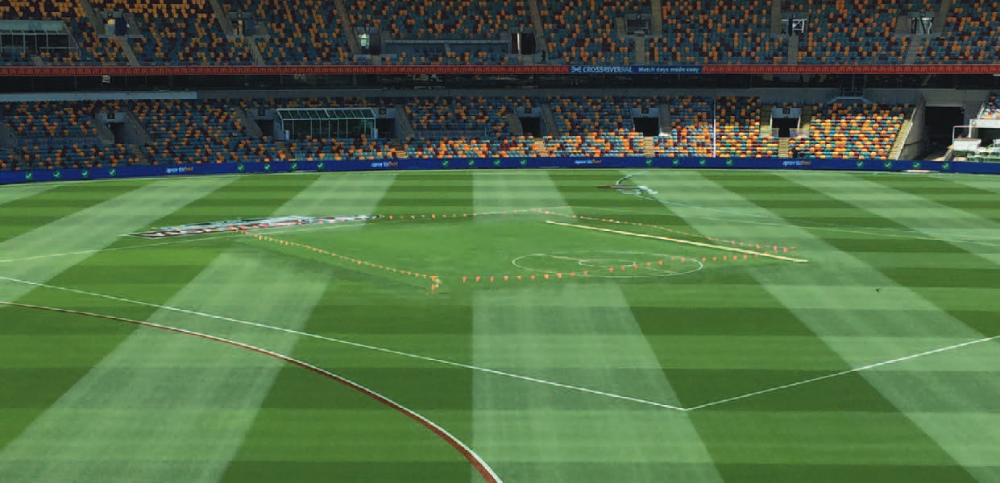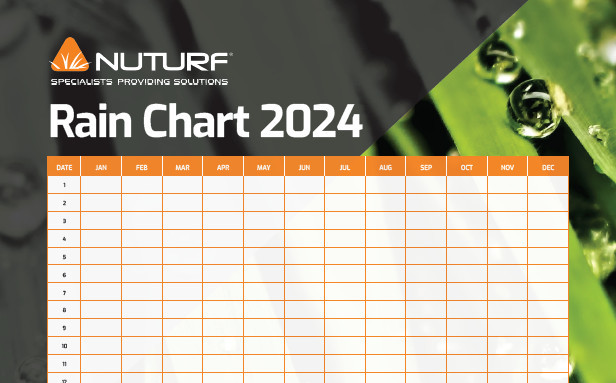Successful Approaches to Managing Stem Weevil
Argentine Stem Weevil (ASW) management in golf is a recurring challenge for superintendents. The extent to which they are a focus differs greatly between sites and geography. The differences can actually be quite extreme, but for those sites that ASW is a problem execution of a strong management plan that has a rock solid start point is absolutely critical. Early success manages down the potential size and extent of the problem thereafter, hence a lot of focus is put on the first seasonal steps that reduce the breeding potential of overwintered adults.

Management is a program approach
Stem weevil management requires persistence and diligence. Complacency can result in real problems. A season long view must characterise the approach and accuracy in timing and product application must be the foundation of the plan.
Overwintered adult weevils are the source of all that follows. Strong management of this seasonal and lifecycle stage limits the actual number of larvae produced and is a primary determinant of the population sizes that occur in following generations. Population number = pest pressure. Maintain numbers below a damage causing threshold and your world looks a whole lot better as does the budget that supports the management activities.
Understanding stem weevil biology
Egg laying in winter is uncommon. Rather the adults ‘overwinter’ and lay their eggs just as temperatures start to rise. The actual lifecycle duration and turnover is greatly affected by temperature – generation intervals shorten as temperatures rise with the progressing seasons. Three to four generations per year are fairly normal –especially in Sydney. Having overlapping generations is also quite normal as is observation of concurrent lifecycle stages.
Eggs are laid in the top layer of the sheath; young instars feed down the tiller towards the crown; older instars live in the thatch and feed on roots. Note this transition over time as different chemistries are better suited at different times depending on physical location of the target. After the fifth instar is reached the larva pupates within the upper soil profile and the adult soon emerges. Adults then mate and lay the next generation of eggs, or over winter to resume the lifecycle the following season.
Sites under serious pressure may need multiple runs through a sequence of chemical interventions rather than just a single cycle. Rotation of chemistry mode of action groups is absolutely critical for sustainable long-term management.

Scheduling options for development of strong programs
Whilst the sequence of chemistry deployment is a message that remains consistent across geographies as these are matched to lifecycle development and a generational continuum, the actual timings require localisation. For example, commencement of a program will shift later in areas such as Melbourne and country Victoria and the total ASW season will often be more compressed in these locations, whereas in Sydney it would start earlier and run for longer.
All programs should commence with the application of an adulticide chemistry that specifically targets the breeding adults in late winter. This is the source of all that follows so the bigger the impact here, the lesser the pressure later. The lack of a defined crossover point of adults versus emerging larvae means ideally the second application in a program contains an ability to treat both lifecycle stages. Few chemistries do this well, if at all, hence the versatility of products like Provaunt (indoxacarb) is of immense value at this time. The prevalence (and often predominance) of the damage causing grubs by the time we hit early to middle spring means a specialist larvicide is the third step in the program.
In recent years the anthranilic diamide chemistries became available and we got two outstanding representatives from the family - Acelepryn (chlorantraniliprole) and Spinner (which contains cyantraniliprole). When we only had the former it was included in stem weevil programs and led a generational change in management options, but then we got the brother molecule that allowed us to step up management potential even further courtesy of vastly superior abilities to treat larvae feeding inside the stem. Cyantraniliprole is more soluble and therefore more mobile within the plant. Its rapid and efficient acropetal (upward) movement meant the part of the lifecycle where the larvae feed inside the stem was not a point of safety from treatment. Spinner allows a continuation of treatment whether the larvae is inside or outside the plant meaning coverage remains strong and sustained.
The final leg of a program sequence is then to utilize either a pyrethroid again or possibly fipronil. Site history should be used to guide this step based on a combination of observation for weevil number, lifecycle stage observed, history of effectiveness, and rotation of Mode of Action (MOA) options. Chemical rotation in the management of weevils is important as this pest ticks all the boxes for higher resistance risk e.g. multiple lifecycles per annum, short duration lifecycle stages, possibility of treatments not matching sequential lifecycle steps and the possibility of historical treatments coming from a narrow chemistry base.
A generic model for site specific customization
Sites that have a history of strong attack should consider rolling through the 4 step process a second time to ensure late summer populations don’t balloon to damaging levels.

How Nuturf can help you
Nuturf Territory Managers are well versed in the history, current status, options available and localization requirements that combine in the development of appropriate stem weevil management programs.
We can sit down with you and select a sequence and timing schedule of product use that suits your site, your needs and your budget. Through our national network of highly competent staff we have many years of experience in treating these pests in various geographies around the country. We can therefore recognize and help plan for the nuances different locations produce.















